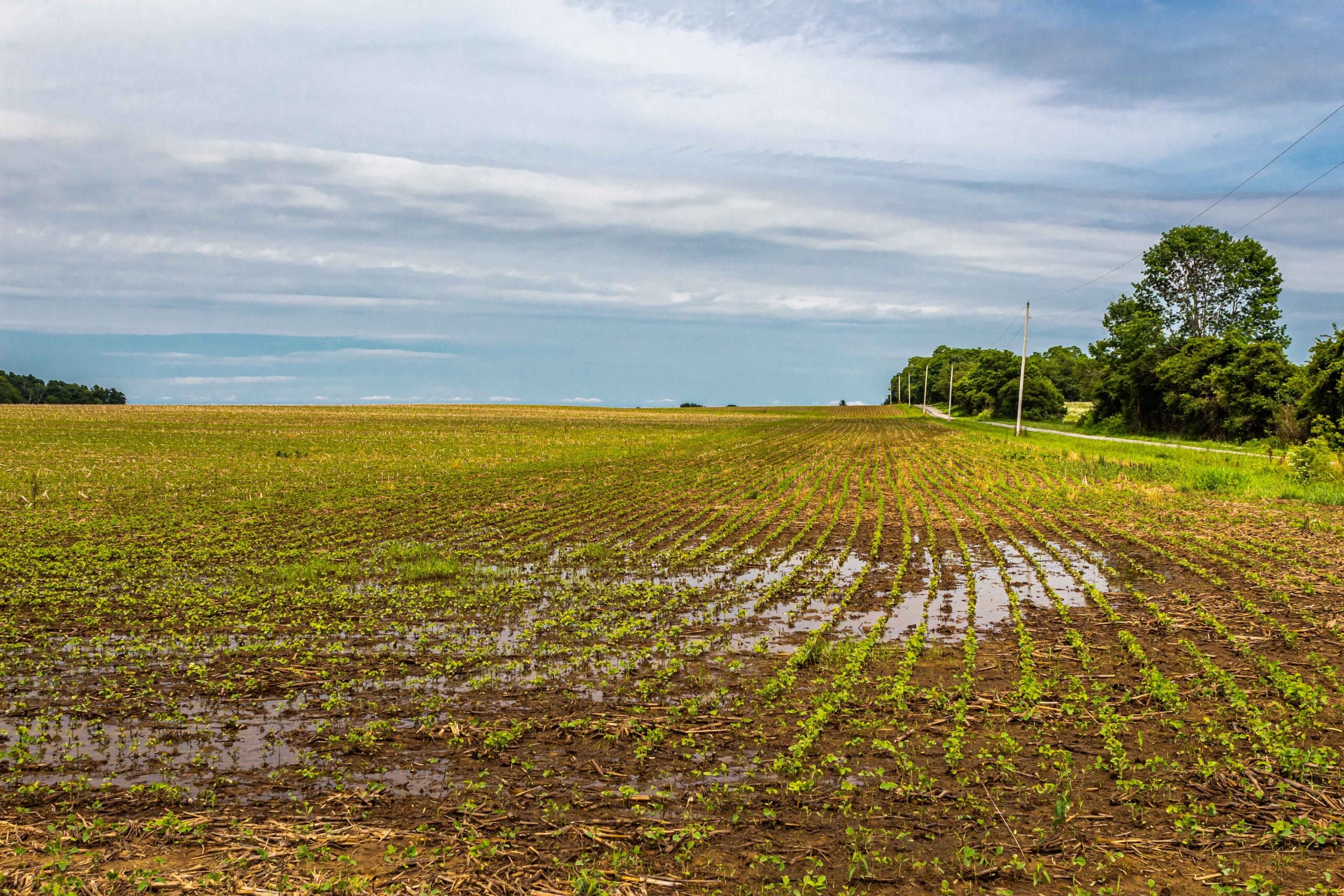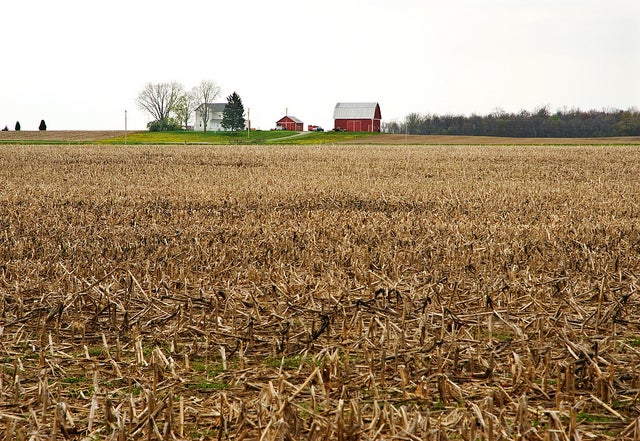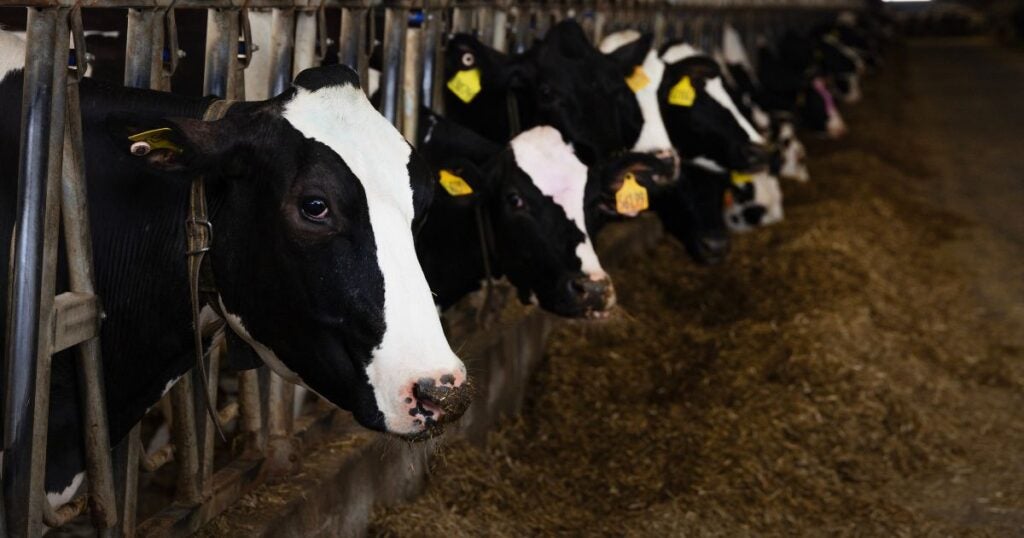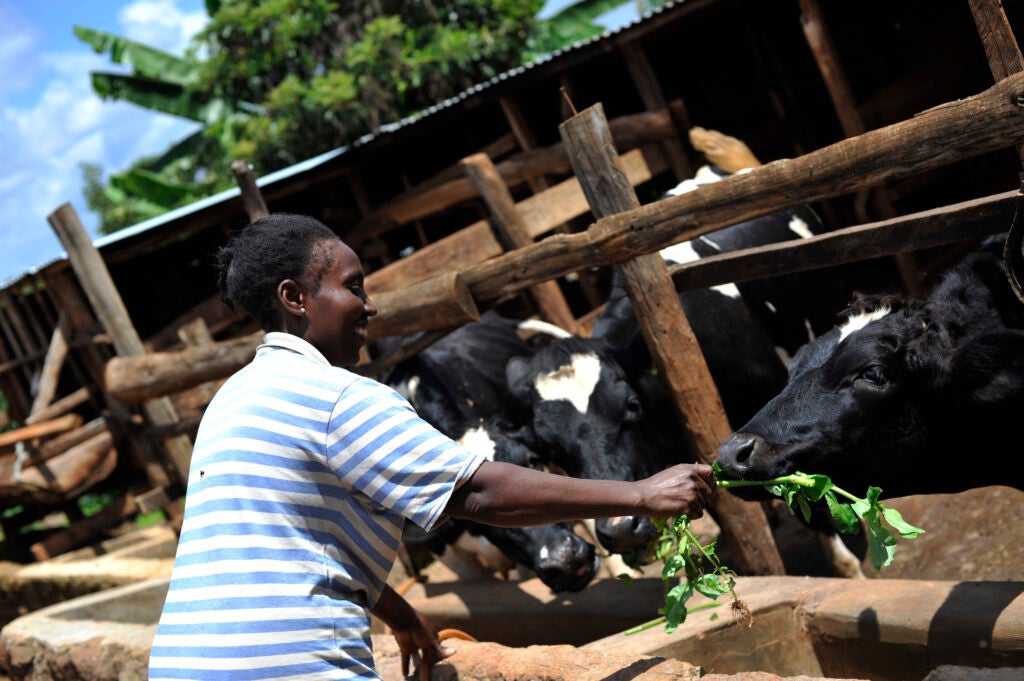Last year, the U.S. faced its fourth most costly year of extreme weather, contributing to more than $20 billion in agricultural losses. As this trend of increasingly extreme weather continues, modernizing agricultural insurance in the U.S. is a crucial step toward protecting farmers’ financial stability and reducing the risks they face when transitioning to climate-resilient practices.
Growing Returns
Modernizing agricultural insurance to strengthen farmers’ ability to adapt
A new normal for Irish dairy: Pioneering sustainable change for Ireland’s climate future
Ireland’s lush pastures and deep-rooted agricultural traditions have long made it a global dairy powerhouse. But with agriculture contributing nearly 38% of the country’s greenhouse gas emissions — four times the EU average — there’s no escaping the uncomfortable truth: Ireland’s booming dairy sector must evolve to meet the country’s climate targets.
To respond to this pressing challenge, Environmental Defense Fund Europe (EDF Europe) and EIT Climate-KIC partnered to explore a new vision for sustainable dairy. The goal? To co-create a future-proof model that balances climate action with economic resilience in Ireland’s rural heartlands.
Below, we’ll outline a new roadmap for sustainable dairy. Read More
Farmers need technical support to balance crop yields with climate benefits
Cropland, which covers roughly 13% of global land surface, is integral to producing food, slowing warming and boosting resilience. Farmers find themselves in a difficult spot: they are compelled to deliver higher yields to feed a growing human population but with a lower carbon footprint.
This complexity is underscored in a recent paper published in Nature Climate Change, which assessed how tillage, cover crops and crop residue affected both crop yields and greenhouse gas mitigation over time. This work is the first to examine the yield and mitigation impacts of common regenerative agriculture practices independently and collectively at a global scale looking out to 2050 and 2100.
Importantly, farmers can use these conservation practices to produce yields and mitigation, but they will need additional technical and financial assistance to do so. This is critical to maintaining livelihoods, food stability and supporting the climate.
To slow climate change, we must measure livestock methane accurately
Reducing methane emissions, a climate super-pollutant, can lessen rates of warming within decades. Since livestock farming is one of the biggest emitters of that methane gas, with enteric methane from cow burps alone contributing about a third of all human-caused methane emissions each year, lowering it can have a big impact.
To reduce livestock emissions, we first have to know where we’re starting. That requires accurate and validated measurement, but measuring methane from livestock isn’t simple — how we do it matters. These are the most important considerations.
Farmers need support to survive this economic squeeze
In conversations with farmers in recent months, one word keeps coming up to describe their economic reality: “squeeze.” High farm input costs and loan interest rates are making it more expensive for farmers to grow crops. At the same time, low commodity prices mean they earn less money for the crops they grow. Farmers are caught in the middle of a bad deal with many asking whether it is even worth it to farm this year.
Farmers are facing this dilemma while also navigating additional disruptions and uncertainty. Federal funds have been frozen or canceled, putting farmers with existing contracts at risk after they’ve already invested their own money with the expectation that government funding would cover the remaining cost of farm improvements. Tariffs create another layer of price uncertainty and open the door for other countries to gain a competitive advantage in global markets. On top of this, farmers in several regions have experienced damage from extreme weather events, making their financial situation even more fraught.
Farmers are getting squeezed, and this makes it harder or even impossible for them to position their businesses for long-term success. But it doesn’t have to be this way.
Three ways to improve soil carbon measurement
Measuring soil carbon accurately is essential for ensuring confidence in large-scale efforts to improve soil health, reduce greenhouse gas emissions and support initiatives like carbon credit programs.
But determining how much organic carbon is stored in soil from decomposed plants can be a challenge, leading to a well-known problem: different soil testing labs can give different numbers for the same soil.
Animal health is key to healthy people and planet
Maintaining animal health isn’t only an essential practice for livestock farming, though any farmer or rancher will agree that’s true. It’s also a way to lower the methane intensity of the meat and dairy produced by livestock and improve health and livelihoods for people, which is particularly important for smallholder farmers in low-income countries.
Livestock farming contributes more than one-third of human-caused methane emissions, a powerful super-pollutant responsible for much of the additional warming and extreme weather the world is facing. At the same time, animal agriculture both provides critical nutrition and supports the livelihoods of millions of families, benefits that are now at risk due to heatwaves, droughts and other climate impacts.
Without financing solutions, farmers have to leave money — and environmental benefits — on the table
This op-ed was originally published in Hoard’s Dairyman. Since its initial publication, the financial uncertainty for farmers engaging in conservation practices has grown substantially. Ongoing trade negotiations, tariffs and blocked funding for existing U.S. Department of Agriculture contracts for conservation expenses and the uncertainty of future funding for conservation programs intensify the financial challenges faced by dairy farmers.
Dairy farmers are already part of a high-risk industry — the experience shared below shows how difficult it can be to align funding opportunities with farms’ financial needs. Now, farmers are being left to absorb that risk with less support. To continue producing food for their communities and responsibly stewarding natural resources, farmers will need more flexibility from financial institutions and greater investments from stakeholders advancing sustainable agriculture.
By Alice Crothers
Measuring soil carbon is economically feasible

Doug Peterson, State Soil Health Conservationist with USDA, displays soil sample from a field that uses cover crops.
Credit: Kyle Spradley, MU College of Agriculture, Food & Natural Resources
There’s widespread consensus that climate smart agricultural practices like cover cropping, reduced and no-tillage and crop diversification can help farmers adapt to climate change and help reduce greenhouse gas emissions. Yet confidence in the impacts of these practices as a climate solution has been undermined by reliance on models to determine how much carbon has been accrued or retained in soils.
Soil organic carbon accounting and crediting relies on models because of the belief that direct measurement is too costly and cannot provide a practical solution to any large-scale measurement, monitoring, reporting and verification (MMRV) program for tracking soil carbon outcomes.
But that assumption may be wrong. Working with a team of researchers from the University of Illinois and Yale School of the Environment, Environmental Defense Fund found that a rigorous approach to soil carbon quantification that relies on taking soil samples before and after practice adoption across a large number of farm fields is economically feasible.
The Regenerative Agriculture Financing Program expands in its second year
The Regenerative Agriculture Finance Program, also known as RAF, was launched in January 2022 by Farmers Business Network in collaboration with Environmental Defense Fund. The pilot year of the RAF program included 48 corn, wheat and soybean farmers seeking access to lower interest rates on operating loans by achieving standards for soil health and nitrogen fertilizer management practices.
When launched, the RAF program quickly became Farmers Business Network’s fastest selling financial product ever. Of the participating growers who completed data collection, 83% met the environmental standards and received a rebate payment equal to 0.5% of their loan interest rate.
The success of the pilot year of the RAF encouraged Farmers Business Network to expand the program. Learn more about the 2023 program results, as well as new opportunities and challenges for the RAF.


















